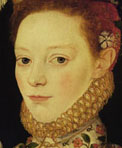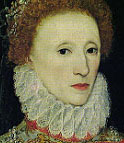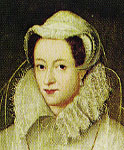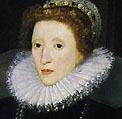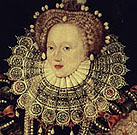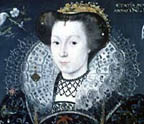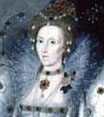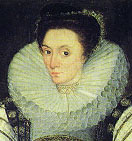It started off in the 1530s and 40s as a modest ruffle on the neckband of a high-necked smock. It was of linen, like the smock, and often box-pleated. It could also be decorated with a buttonhole stitch along the edge. Isabella of Portugal is wearing such a pleated neckband in the portrait to the right.
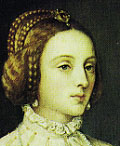
Isabella of Portugal,
1535
In the 1550s, the ruff began the growth which was to culminate in the gigantic ruffs of the 1590s. The ruffles were still quite small and box-pleated, but layers of ruffling were stacked on eachother for a thicker, fuller ruff. These ruffs were full at the sides and back of the head, and tapered down as they reached the front. Ruffs were made of linen rather than silk, for the springiness and stiffeness of linen made it hold its form better. Linen fabrics like lawn, holland, and cambric were in high demand for ruffs.

Mary Tudor
1550s

